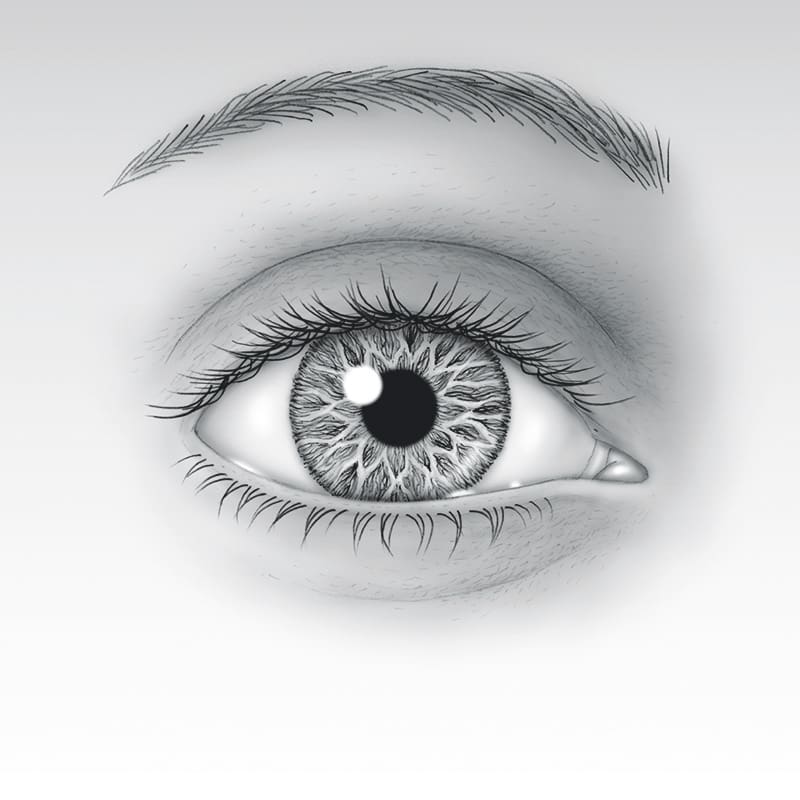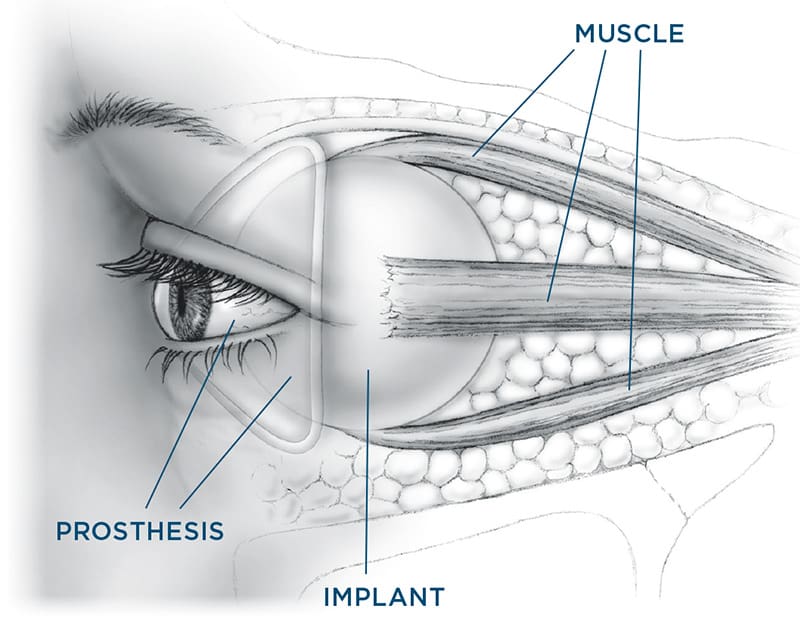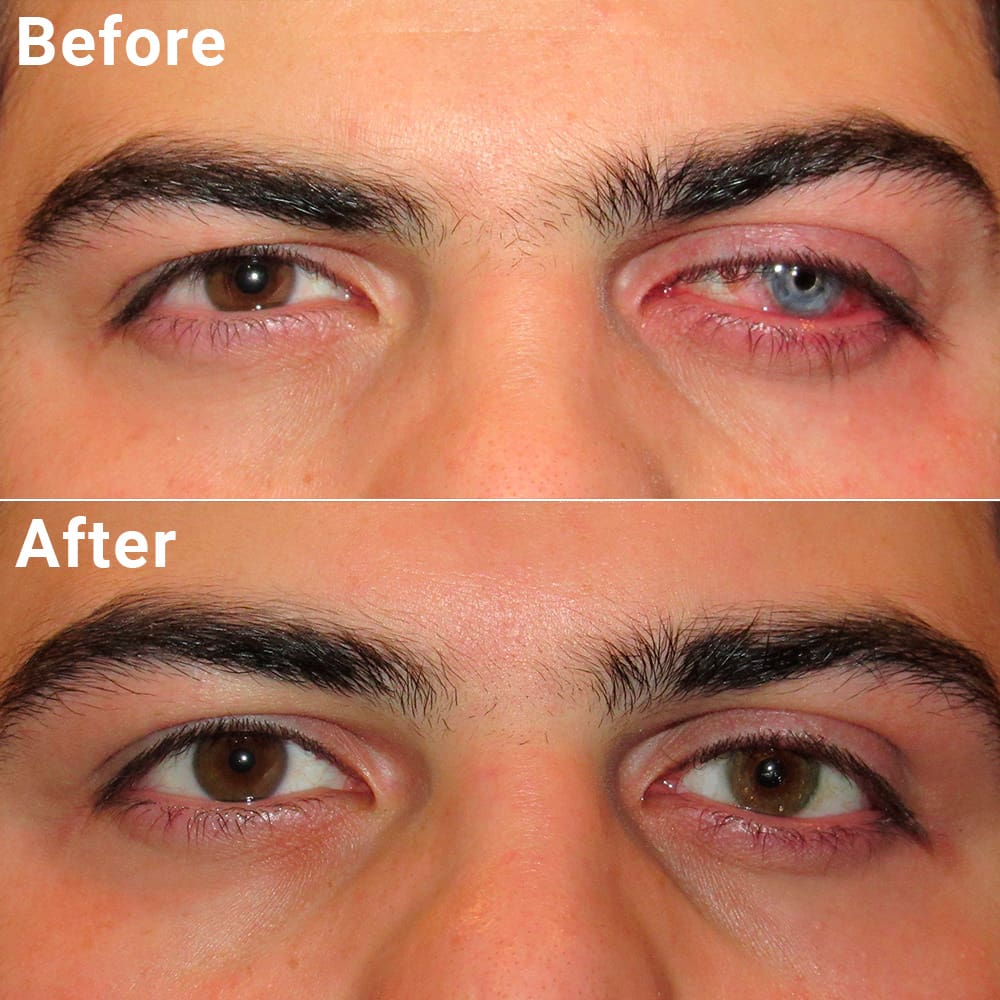Surgical Eye Removal (Enucleation & Evisceration)
Why Would an Eye Need to Be Removed?
Removing an eye is a serious decision, but in some cases, it may be the best choice to relieve pain, protect your health, or restore appearance. Surgery may be needed if:
• The eye is blind and painful
• There is a serious infection or injury
• A cancerous tumor is found inside or around the eye
• The eye has become shrunken and deformed over time
In some situations, removing the eye may save your life (such as with certain tumors). In others, it may greatly improve comfort and appearance.

Types of Surgery
There are two main types of eye removal:
1. Enucleation
The entire eyeball is removed, leaving the muscles and surrounding tissue in place. This is typically done when:
• A tumor is present inside the eye
• There is a severe injury
• Infection threatens the tissue around the eye
2. Evisceration
The inner contents of the eye are removed, but the outer shell of the eye and eye muscles are left intact. This may be used when:
• There is no tumor or infection inside the eye
• A shorter duration surgery is desired
• Your oculofacial plastic surgeon will determine which procedure is safest and most appropriate for your situation.

What Happens During Surgery?
Eye removal is usually done as an outpatient procedure. You’ll receive general anesthesia (you’ll be asleep during surgery). After the eye or eye contents are removed:
• An orbital implant is placed deep in the eye socket to maintain shape and avoid a sunken appearance.
• The muscles that move the eye are usually preserved so the subsequent artificial eye can have some movement.
• The surface is closed, and a temporary shell or conformer is placed over the implant.
What Is Recovery Like?
• You may feel tenderness or pressure around the eye socket for a few days.
• Swelling, bruising, and discharge are normal at first.
• You’ll need to use antibiotic drops or ointment and follow instructions for care.
• Most patients return to regular activities in 1–2 weeks.
You’ll see an ocularist (a specialist who makes artificial eyes) for fittings a few weeks after surgery. Prosthetic eyes are not implanted but are like large contact lenses that go in and out from under the eyelids.
Risks and Complications
All surgeries carry some risks. Possible complications include:
• Bleeding or infection
• Poor movement of the prosthetic eye
• Discomfort or shifting of the implant, including the implant coming out of the body
• Scarring inside the eye socket
• Rare need for further surgery
Let your doctor know if you take blood thinners, as this may increase the risk of bleeding.
How Will It Look?
A well-made prosthetic eye is hard to detect and can move naturally with the other eye. Most people feel more confident once healing is complete. Your oculofacial plastic surgeon and ocularist will work closely with you to get the best result possible.
